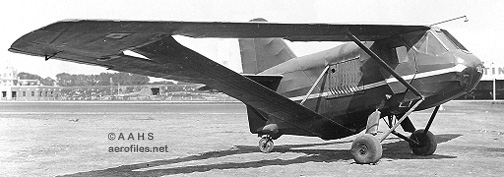This shoulder-wing monoplane bears a definitive family resemblance with the previous smaller Breda 65. The 75 was a large two-seat ground attack and recon prototype built in the late 1930s powered by a 900 hp Isotta-Fraschini K.14. With the recon mission in mind, the 75’s fuselage was provided with a considerable number of observation windows on its belly. Tested unsuccessfully in 1939, it was soon forgotten.
Very Lockheed Vega or even Consolidated 17 Fleetster. That fixed undercarriage looked both anachronistic and ultra cool.











